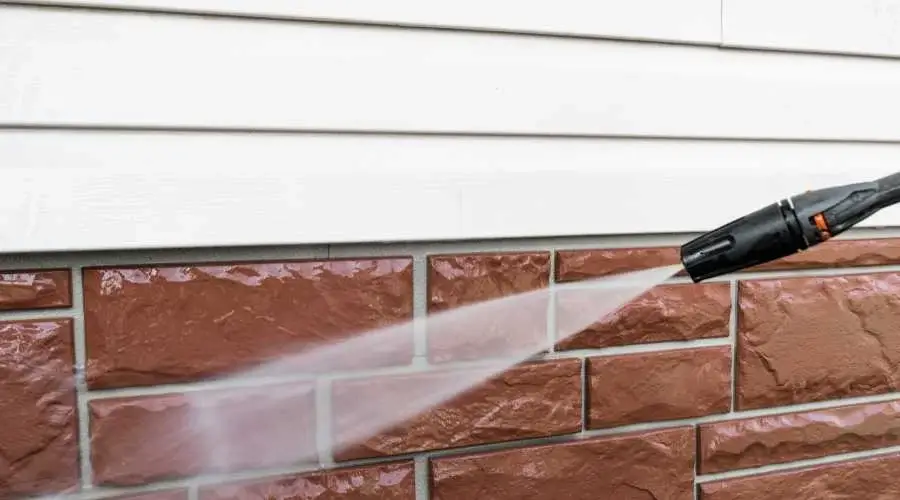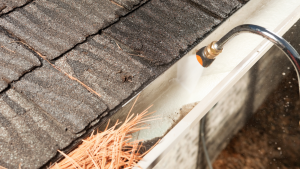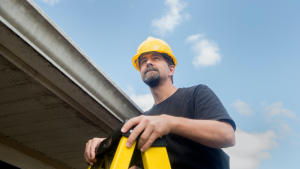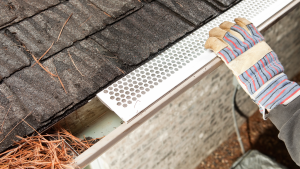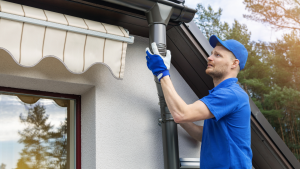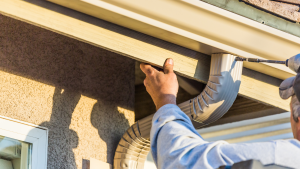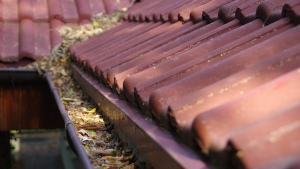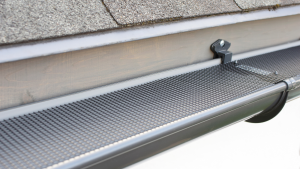Pressure washing or power washing is the application of water under high pressure to remove loose paint, mold, algae, grime, dust, mud, chewing gum, and debris from surfaces and objects such as buildings, fences, masonry, certain vehicles, and concrete or asphalt surfaces such as driveways and patios. Although the terms “power washing” and “pressure washing” are frequently used interchangeably, they refer to two distinct procedures. Both pressure washing and power washing uses high-pressure water to sanitize surfaces, but only power washing has a heating element to warm the water.
As with any cleansing method, heated water cleans more effectively. Some items should be power or pressure washed with added chemicals, such as baking soda, vinegar, citric acid, or commercial power washing detergents, sanitizers, or disinfectants. Here are seven additional items you should know before using a power washer or pressure washer around your home:
Power Washing & Pressure Washing Are Not The Same
The concept of steam cleaning your home, patio, driveway, and other residential features is appealing. Even the most stubborn grime and stains can be removed with a high-pressure hose and hot water. However, it is not the optimal material for brick, concrete, or masonry. All of this cleaning capacity comes at a cost. Pressure cleansing can be extremely damaging to these surfaces. Instead, use a pressure washer with the appropriate cleanser.
Power Washer – Heavy-Duty Model
- Use on expansive locations such as extra-long or expansive driveways.
- Use where there is excessive dirt, grease, moss, and weed buildup, as well as moldy surfaces that are slippery. Similar to how hot water is superior to chilly for cleaning dishes and floors, the heated water here can loosen grime that has become firmly adhered to outdoor surfaces. Additionally, it eliminates fungi and moss and prevents their rapid return.
- Use pressure washers on surfaces that can withstand heat and pressure.
Pressure Washer is the Safer Option for Surfaces
- Use on modest patios, decks, and driveways
- Use on delicate surfaces such as wood porches, siding, and tiled areas.
- Utilize on surfaces such as masonry, concrete, and brick
Commercial & Residential Chemicals Are Different
Not all cleansing products are identical. Understanding the distinctions between cleansers can mean the difference between cleaning and destroying the surface being power/pressure washed. There are four chemical varieties utilized in power/pressure washers. These chemicals are designated according to their intended use and the surface type on which they are to be applied. Sanitizers eliminate 99.99% of bacteria in 30 seconds or less, and disinfectants kill all organisms within 30 minutes.
Each surface of the object being cleaned is unique. Each surface requires unique techniques, nozzle diameters, pressure, and, if necessary, chemicals. If you’re not a professional, keep to pre-mixed cleaners that are designed to clean specific surfaces, such as “Krudkutter” for house and siding as opposed to “Krudkutter” for decks and fences. There are distinct soaps for concrete, timber, and asphalt driveways. Ensure you purchase the correct cleanser for the surface you intend to clean. You can clean objects with a pressure washer and water alone, but consider how much better any surface can be cleaned with hot water, soap, and pressure.
Not Everything Can Be Power Washed
Not every surface in or around your residence can be pressure- or power-washed safely. The following surfaces should not be power or pressure cleaned:
- Laminar sandstone – You can easily sluice it away or create groves in it. It is too delicate for electric or pressure washing.
- While painted items can be washed, it typically requires a professional to do so without damaging the paint.
- Asphalt roofing – Power or pressure washing will literally damage an asphalt roof by removing its granules.
- Whatever is ancient regardless of what it is – Old items, such as furniture, platforms, and wooden structures, may have dry rot that is destroyed by a pressure wash. A pressure wash can soften and damage even fine wood.
- Pressure or pressure washing can literally remove the stain from stained wood. If so, proceed, but if not, keep in mind that you may need to re-stain the wood once it has dried.
Consider Size & Surface Material
Since the primary or only difference between the two methods is heated, it is essential to consider the size of the area to be cleaned and the type of surface. The primary advantage of using hot water is that it provides a significantly more efficient and effective thorough cleaning than cold water. Larger areas are best cleaned with heated water. If the area to be cleaned contains a great deal of salt, mildew, moss, or vegetation, a pressure washer is also the superior choice.
Choose the Right Equipment to Power Wash
If you are an avid do-it-yourselfer, consider renting a commercial pressure washer to clean large areas rather than purchasing or using a residential unit. Even better, employ a professional. Whether the unit is residential or commercial, an untrained householder can either damage the item being cleaned or leave visible cleaning lines that detract from its appearance. You may also cause damage to the pressure washer or harm someone.
Power & Pressure Washing Are Dangerous — Use Cautiously
Although it may not appear that this thin stream of water could be harmful to humans, it is in fact extremely hazardous. It emerges from this device with up to 2,000 pounds of force. It is sufficient to cause concrete and stone fragments to ricochet at you or someone else with the force and precision of a projectile. Considerations for force or pressure washing:
- Never aim a power/pressure washer at an electrical or water outlet. Before sprinkling, cover or secure all water and electrical outlets.
- Never spray another person with a power/pressure washer, as the discharge can cause severe injury or even death.
- When spraying, use safety eyewear, goggles, and even better, a full face shield.
- Some applications benefit from close proximity, but maintain a distance of at least 5 to 6 feet from the surface you’re cleansing until you determine how the spray reacts.
- Before spraying windows or delicate surfaces, begin with the lowest setting possible and test it on a hard surface.
- Begin at the top of a vertical surface and work your way down so that filthy water does not flow over clean areas.
- Spray a chemical or cleansing solution on the surface, let it soak for 5 to 10 minutes, and then rinse with clean water. Do not allow the cleaning solution to dry on the surface, as this will only re-deposit the grime that you just removed. Spray it with a standard garden faucet to keep it wet while it soaks.
- Depending on the size of the area, the type of debris to be removed, and your available resources, it may be preferable to employ a professional power-washing company to clean your home, driveway, or deck.
- If you’re renting the device, request that the shop or clerk demonstrate how to use it, rather than simply explaining its operation.
- Ensure you are using the proper nozzle for the task at hand. A nozzle with a spray angle of 0 degrees produces the strongest spray and is ideal for cleaning stubborn grime, algae, mud, and stains. A 40-degree nozzle sprays broadly and is ideal for house siding, sidewalks, terraces, and decks, among other surfaces.
Consider the Time of Cleaning
The majority of power/pressure washing occurs in the autumn and spring. If there are a few warm winter days, examine the weather forecast. Shooting water into cracks and crevices is acceptable in mild or cool weather, but if freezing weather is expected within a week of pressure/washing, water may freeze and expand, causing damage to the surface you’ve cleaned. Ensure that the temperature will not fall below freezing before you launder.
Power/pressure washing is a wonderful way to clean your home, but if you’ve never used a sprayer before, use caution and learn everything you can about how to clean your home, car, fence, and driveway before turning on your washer.

